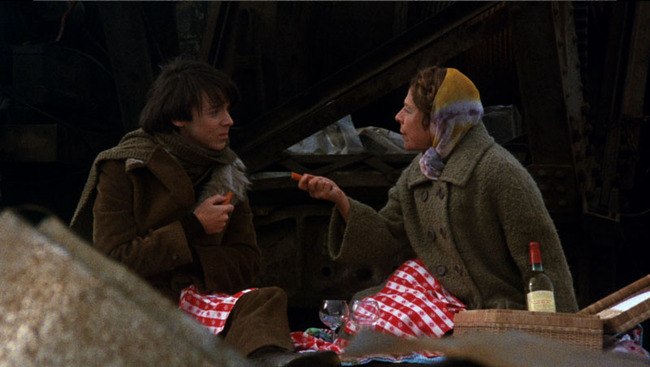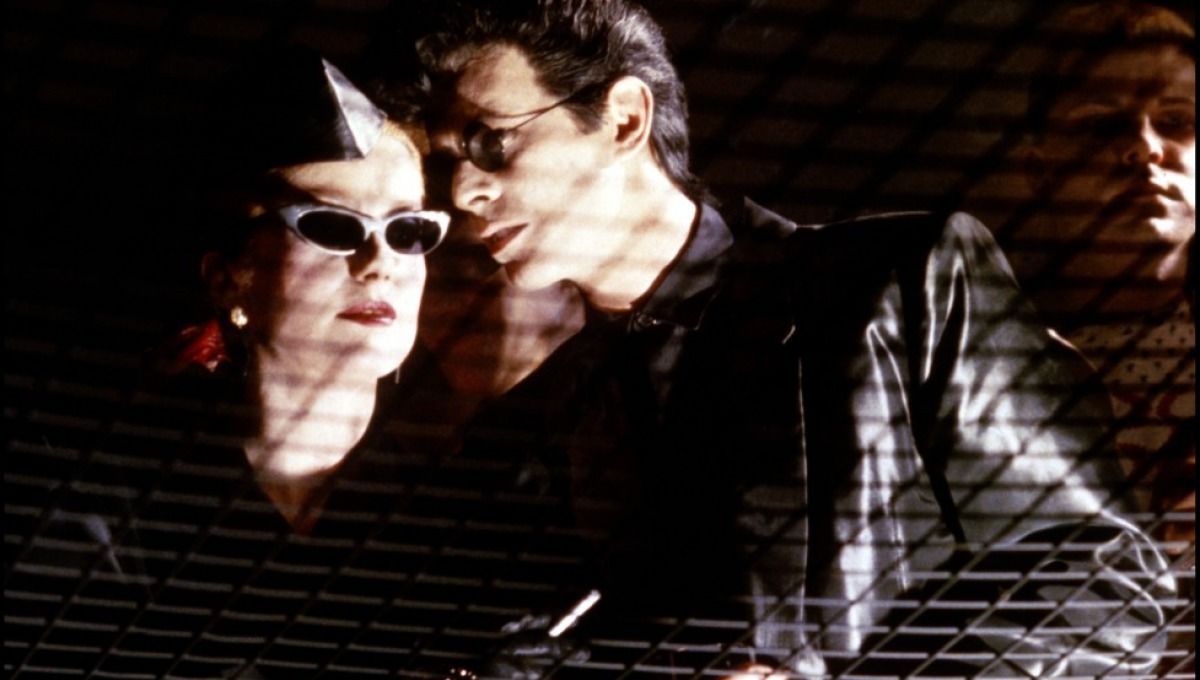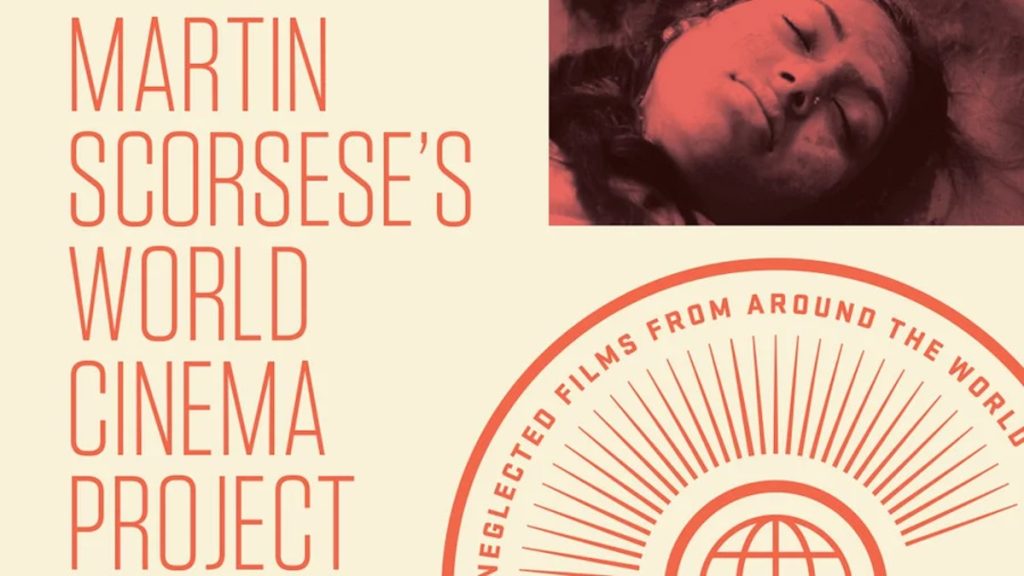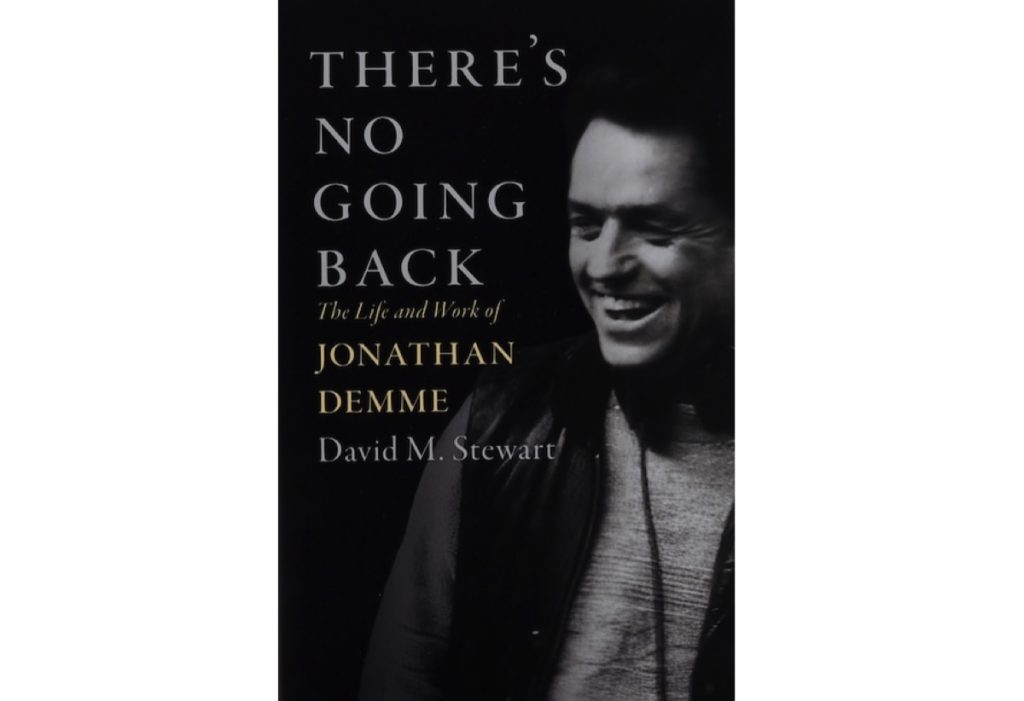In the midst of an unprecedented global pandemic, many of us are grappling with worry and fear. Being forced to forgo social contact, we are maybe reading more, maybe binge watching movies and TV. But we’re also turning our attention inwards, laying bare thoughts of mortality. Death. And even as these thoughts may be unbidden, they are also compelling. Death is a universally common human experience. There’s no escaping it, despite our wildest dreams of cheating death or living forever.
Nearly all of the world’s mythologies reveal a connection between the realm of death and the realm of dreams, with both being seen as loci of visionary travel: the Celtic Otherworld, the Aboriginal Dreamtime, the Greco-Roman Hades, the shamanic journeying of Native Americans. And the cinema experience, also a visionary journey at times, has been compared to the state of dreaming: immobilized, watching unbidden images spool before us in the dark. Cinema is an artistic gateway to other realms of consciousness. Within those realms we may examine our fears and curiosities about death in stories that imagine something unusual or unexpected awaits us.
Cinema also connotes a form of immortality, a chronicle of life being lived in all its noise and color, preserved as a record and memento of other timelines, and a way to remember its artists and players who have since departed. Though we cannot currently visit cinemas to engage in this journeying or catharsis, viewers can still engage with films that explore the idea and portrayal of death in ways that are intriguing, surprising, and even comforting.
People certainly die in cinematic narratives. But in some genres, death is portrayed as a malleable experience, a state of consciousness with revelations and insights for the living. Some films portray people who are dead but don’t realize it yet, situations where the dead return to life, where grieving people communicate with ghosts, or where dead souls are reincarnated. I’ve selected a few films that have moved me over the years and made me think more deeply on this subject that, I’ll admit, consumes me more than it should some days.

HAROLD AND MAUDE (1971)
“A lot of people enjoy being dead.”
Hal Ashby’s weird and strangely uplifting black comedy is as disturbing as it is charming. A suicide-obsessed teenager (Bud Cort) meets an eccentric elderly woman (Ruth Gordon) who is in love with life, and together they discover…well, I’ll let you find out. Think Auntie Mame if it was staged for a Bauhaus production. The lead actors are stupendous, the tone irresistibly unnerving, the soundtrack (by Cat Stevens) wonderfully ill-fitting and perfect. This was a cult movie back when there weren’t very many of them. It still holds up as a strong example of contemporary cinema’s daring take on difficult topics, offering catharsis and comfort to viewers who were still immersed in the horrors of the Vietnam War era, when so many young American men were killed after being drafted. Harold’s nihilism and utter lack of hope for the future reflects the cultural malaise during a time of deep cynicism and social upheaval.
LOGAN’S RUN (1976)
“Carousel is a lie! There is no renewal!”
This one is taking on added irony right now, as folks speculate on just how discerning our current pandemic is when it comes to the age of its victims. In this slick futuristic tale helmed by prolific English director Michael Anderson people live a luxurious existence in a self-contained artificial dome. Everyone is required to participate in a fiery ritual when they reach age 30, believing they will be reborn and “renew.” Of course this may be a metaphor hinting at the generational divide of the era — “don’t trust anyone over 30” was a popular adage of the day. Or perhaps a rejection of Judeo-Christian religion in a society becoming increasingly secular and neo-pagan, But Logan’s Run also portrays a world whose limited resources are the result of environmental degradation, a timeless trope we’re confronting with greater urgency every day. In 1976, environmental alarm bells were ringing, and choking smog and toxic rivers eventually inspired environmental protection legislation that is now being decimated.
THE HUNGER (1983)
“There is no release, my darling. No rest.”
There ought to be at least one vampire story in the bunch. This glossy bauble from Tony Scott stars David Bowie and Catherine Deneuve as two glamorous, seductive vampires who need a recurring roster of new friends and lovers (including Susan Sarandon) to keep them forever young. It’s a bit bloody at times, but also quite sexy (Deneuve and Bowie making out in the shower? YES PLEASE) and suspenseful. The cinematography is luscious, the music (from Bauhaus to Brahms) is sublime, and the whole aesthetic like a very classy music video you’ll want to watch again and again. Bowie’s iconic film performances confer a melancholy immortality upon this preternaturally talented artist whose final album, Black Star, was a bold and clairvoyant work mirroring Bowie’s awareness of his own legacy and imminent death.

SIESTA (1987)
“If I really am dead, why do I feel such love?”
This dreamy, strange film directed by Mary Lambert stars Ellen Barkin as a skydiver who wakes up covered in blood in a field in Spain and can’t remember how she got there. She retraces her steps, meeting a bizarre cast of characters along the way (Jodie Foster, Julian Sands, Grace Jones, Alexei Sayles and others have extraordinary cameos) and finding her decision to rekindle an old flame (with Gabriel Bryne) was a fatal one. Siesta is full of subtle imagery related to the folklore of death: black horses, bare trees, Barkin’s body positioned like the Hanged Man in tarot, a trope one sees frequently now. It’s erotic, mysterious and thought-provoking, and it still haunts me after decades. It’s one of the earliest contemporary films to explore this conceit, of a dead person who is not yet aware they’re dead, in a way that is wildly creative and provocative. Jacob’s Ladder (1990) and The Sixth Sense (1999) play with this plot twist also, minus Siesta’s offbeat humor and steamy sensuality.
TRULY, MADLY, DEEPLY (1990)
“Thank you for missing me.”
This tender, funny love story is a wishful meditation on grief and how it feels to miss a departed loved one so much you literally conjure them alive again. Would that we could do so with Alan Rickman, who gives a heart-clenching performance as the man whose widow (Juliet Stevenson) can hardly believe it when he shows up in the flesh, cold and pale but as real as can be: a solid ghost. His ghost pals show up for movie nights and argue over whether to watch Five Easy Pieces or Fitzcarraldo. Anthony Minghella directs with a deft touch, allowing just enough romance and wonder to permeate this urban fairy tale of love and loss. The devastating absence of the physical body of a loved one: their scent, their warmth, their touch, is here rendered palpable and beautifully plaintive.
DONNIE DARKO (2001)
“What’s the point of living if every living creature dies alone?”
This coming of age drama/horror hybrid set in 1988 stars Jake Gyllenhaal as the titular troubled teenager. Donnie miraculously escapes death in a freak accident, but is haunted by disturbing visions of a man in a spooky rabbit suit (a dark homage to Harvey, perhaps), who orders him to do increasingly violent things and warns him that the world is ending. By turns surreal and deeply relatable, Donnie Darko gained popularity at midnight movie screenings and attained cult status within a year of its release. It is also a love song to the decadent ‘80s, its hyper-consumerism and social nihilism. The film has a bit of everything: time travel, topical humor, a deadpan tone that bristles with hilarity and wit, stunning use of music, and existential brilliance. There had never been a film quite like this before, that combined coming of age issues with deep philosophical ideas, within a chilling speculative fiction.
Indeed, more than any other films in this list, Donnie Darko is immersed in the mythic and cultural concepts of death and dying in ways I can’t recall seeing anywhere else in contemporary cinema. The film also starkly confronts the eroding separation of church and state one began to see in the 1980s with the rise of the Moral Majority. Without being overly preachy, Donnie Darko catalogues and castigates the worst ethical and integral excesses of an era that contained one of the worst widespread pandemics of the modern era: the AIDS crisis. The film’s narrative complexity is surprisingly accessible, allowing viewers to engage almost involuntarily with its profound questions about fate, destiny and the meaning of life and death.



